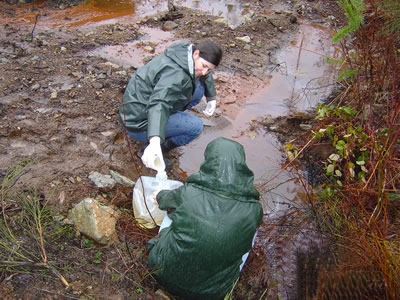What Is Contaminated Land Remediation

Contaminated land remediation is the act of treating a piece of land that is not usable. For example, if a piece of land has been declared unfit for use for any reason, it has to be treated before any sort of commercial or residential activity is carried out on it again. This treatment is known as contaminated land remediation. The treatment will differ according to the nature of the waste. For example if the waste carried some toxic material it has to be treated accordingly. Generally, the land is inspected and experts come out with solutions to make it fit for any commercial or residential use.
Instructions
-
1
First of all, the land has to be inspected by scientists, who ascertain its quality. They determine the level of contamination in the soil and inspect the local environment and weather conditions. This is done because a piece of land, if contaminated with certain elements, can pose more risk to peoples’ health in some weather conditions.
-
2
Once the inspection is done and the type and level of contamination are determined, a treatment is recommended. Sometimes, a piece of land may need more than one method for treatment. For example, it needs to be treated for toxic elements and also for improving quality of the soil. If it is a rocky place, it also needs the rocks to be removed or broken.
-
3
There are specialized companies offering land remediation and treatment solutions. They work on the soil until its quality improves and it is declared fit for use. The companies offer a different range of solutions, depending on the quality of the soil and the purpose it is going to be used for. However, generally the treatment process is supervised and the quality of the soil after treatment has to be certified.
-
4
If the land is going to be used for residential purpose, the process of proper landscaping is also committed after its treatment. In this case, the quality of the soil has to be improved deep down to a certain level, as long as it is not degradable and poses no risk to human lives. Sometimes, local councils or any relevant authorities have to approve the quality of the soil after inspection.

